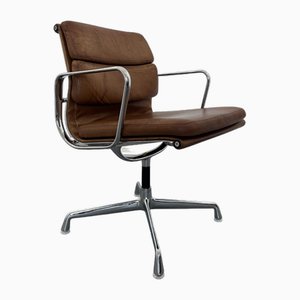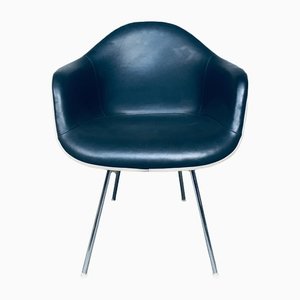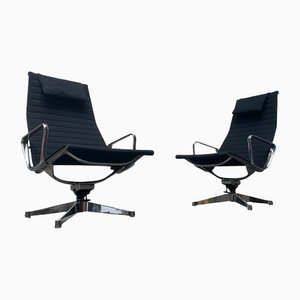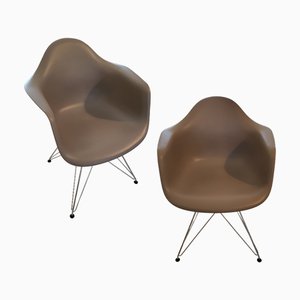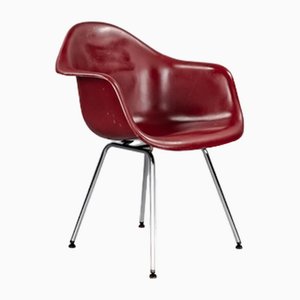
Herman Miller came into being in 1923 when a company man by the name of D. J. De Pree (1891-1990) bought the majority shares of the Michigan Star Furniture Company, with the help of his father-in-law, for whom he named the new venture. Like other furniture manufacturers in West Michigan at the time, De Pree focused on the production of replicas of ornate, 18th- and 19th-century European wood furnishings, until a bankruptcy scare brought on by the Great Depression drove him to seek a new direction. In 1931, De Pree brought in commercial artist Gilbert Rohde, who convinced De Pree that honest, functional designs characterized by clean, simple lines were the way forward—and thus set the course for Herman Miller’s influence on what would become known as the midcentury modern style. Two years later, the first Rohde-designed collection debuted at the Century of Progress Exposition in Chicago.
After Rohde passed away in 1944, De Pree hired architect-designer George Nelson as the company’s first official design director. By crafting a new, compelling corporate identity and collaborating with some of the most visionary designers of the day—Charles and Ray Eames, Isamu Noguchi, and Alexander Girard —Nelson earned the company international acclaim. Under his leadership, Herman Miller created some of the 20th century’s most iconic objects, such as the Eameses’ DCM “Potato Chip” Chair (1945/46), Molded Fiberglass Chair (1950), and Eames Lounge Chair (1956); Noguchi’s Noguchi Table (1948); and Nelson’s own Bubble Lamps (1955) and Marshmallow Sofa (1965), to name a few. Notably, the Action Office Project I series by Robert Propst (1964) paved the way for adjustable and semi-enclosed work environments (a.k.a. cubicles) at a time when modernist design was increasingly adopted as the style for American corporate interiors. More recent office bestsellers include Bill Stumpf and Don Chadwick’s ubiquitous Aeron Chair (1994) and Studio 7.5’s high-tech, environmentally friendly Mirra Chair (2003).
Today Herman Miller and German manufacturer Vitra share many of the same licenses for midcentury modern masterpieces, the former sold in North America and the later in Europe. Much debate surrounds whether one produces better products than the other. The rivalry between the two companies notwithstanding, Herman Miller pieces have been extensively exhibited and acquisitioned into the permanent collections of institutions such as New York’s Museum of Modern Art, London’s Victoria & Albert Museum, and even Weil am Rhein’s Vitra Design Museum—and many, many more.
* All images courtesy of Herman Miller.

